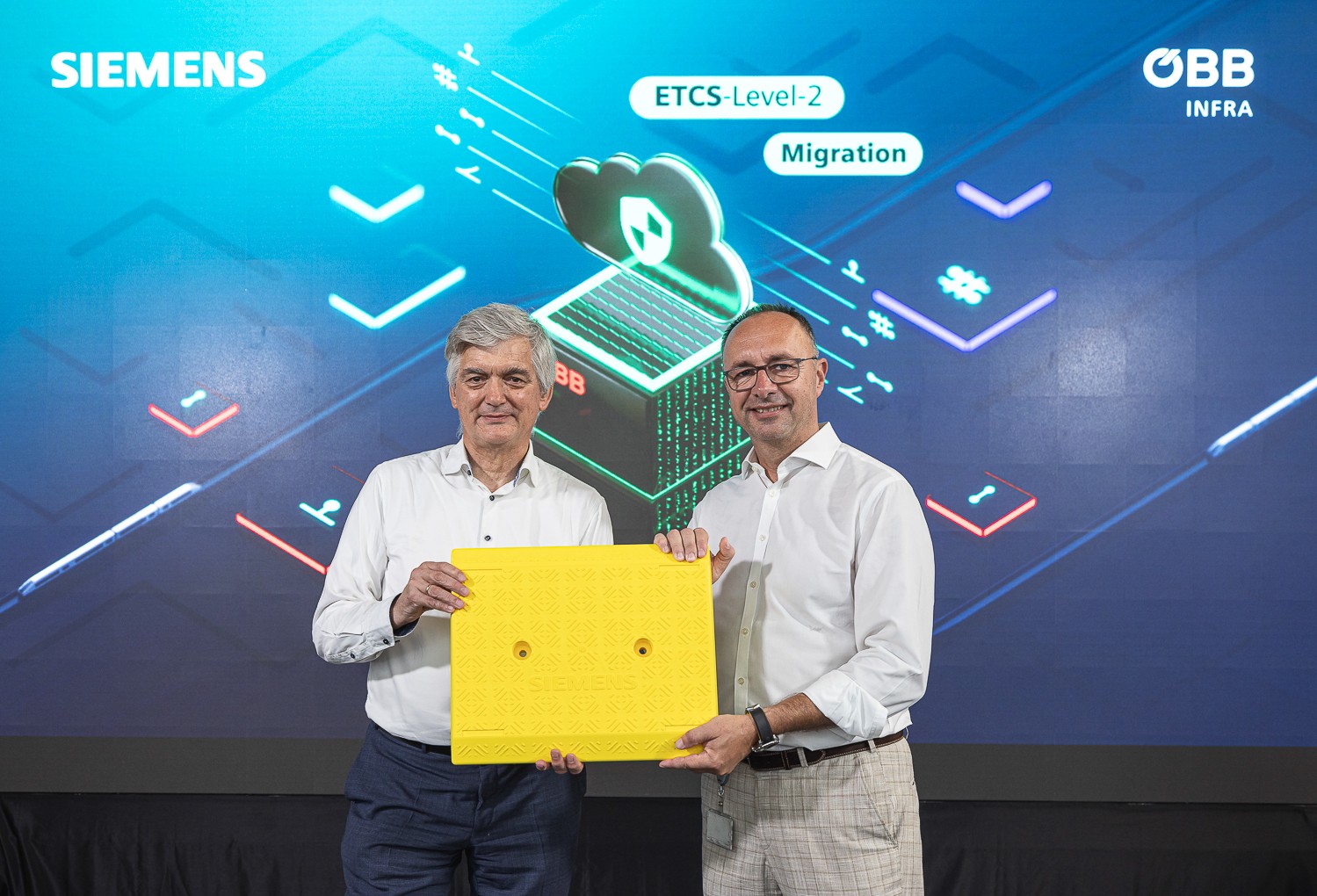 The Austrian Federal Railways (ÖBB) and Siemens Mobility signed a EUR 400 million framework agreement for ETCS trackside expansion to double the capacity of Austria’s rail network by 2040. This enables the route to carry more passengers and freight, and ensures that the trains run more reliably, punctually, and safely.
The Austrian Federal Railways (ÖBB) and Siemens Mobility signed a EUR 400 million framework agreement for ETCS trackside expansion to double the capacity of Austria’s rail network by 2040. This enables the route to carry more passengers and freight, and ensures that the trains run more reliably, punctually, and safely.
On August 22, 2023, ÖBB-Infrastruktur AG and Siemens Mobility presented in Linz the long-term cooperation agreement and announced the successful commissioning of a first route section, between Linz and Vöcklabruck (57 km).
ÖBB-Infrastruktur AG will invest EUR 200 million in the train control system by 2026, and a total of around EUR 900 million has been earmarked in the framework agreement for ETCS and train controls. A significant innovation in the framework agreement is the use of the DS3 (Distributed Smart Safe System) platform, which has been employed successfully since November 2020 in a pilot project for the interlocking at the Achau railway station in Lower Austria. Thanks to this digitization, ÖBB achieves significantly higher cost-effectiveness through lower investment and maintenance costs.
The agreement regulates the expansion of the ETCS Level 2 system throughout Austria’s high-level rail network, the establishment of so-called ETCS Radio Block Centers (RBCs), which will be redundant, and the maintenance and servicing of these facilities. During the project’s rollout, plans call for installing a total of 21 RBCs by 2038 to provide fail-safe coverage for Austria’s high-level rail network.
ETCS Level 2 operation began at the start of August on the Linz–Wels–Vöcklabruck and Wels–Haiding line sections, marking the first commissioning based on the new framework agreement. The ETCS Radio Block Centre covering this section is located in Vienna, and trains operating on the route are digitally monitored and controlled in Linz.
Vienna–Breclav, Vienna–St. Pölten or Kufstein–Brenner routes have been also equipped with the ETCS.
“Efficient railway infrastructure is critically important for achieving Austria’s climate goals. To help us handle the expected increase in rail traffic and shift away from roads, we are relying extensively on digital initiatives, and ETCS Level 2 is an enormously important component for railways of the future. The framework agreement signed with Siemens Mobility is based on a Europe-wide tender and we’re looking forward now to working with the best bidder to equip further rail routes with Level 2,” Johann Pluy, the CEO of ÖBB-Infrastruktur AG said.
The ETCS trackside expansion programme will help respond to increased passenger transport demand.
The DS3 is the new software platform from Siemens Mobility for safety-relevant logic and is used to migrate existing applications such as ETCS or interlockings to a standard high-performance platform based on COTS, which uses multicore technology and a new communication concept for a fully IP-based system architecture. DS3 will enable ETCS control centers to be further optimized and given greater flexibility.
Along with the coupling computer already running on the DS3 platform, which is the link to the interlockings, the ÖBB and Siemens Mobility partnership will also employ DS3 in all of the RBCs.
Share on:



